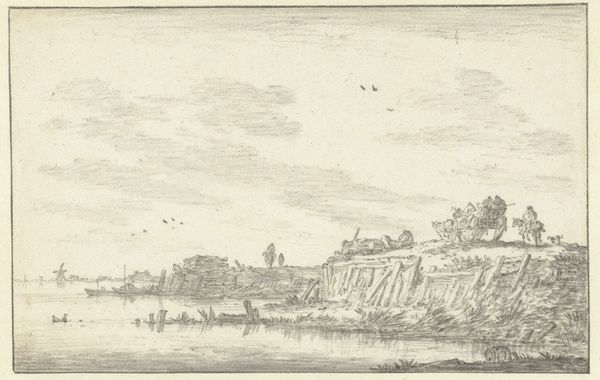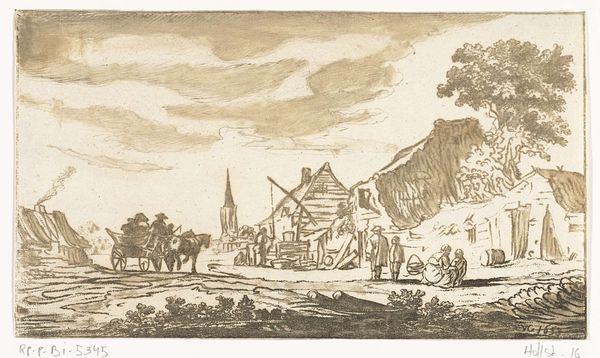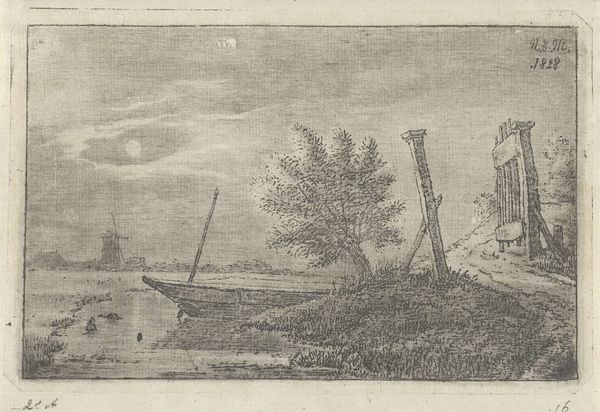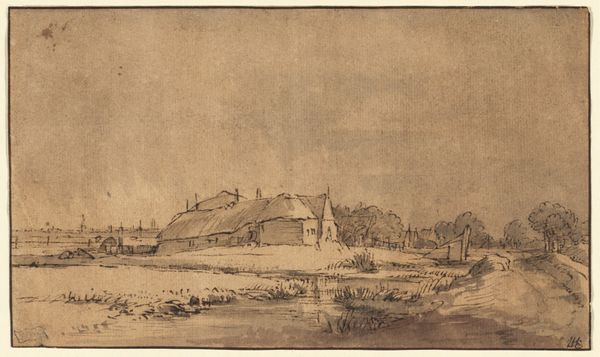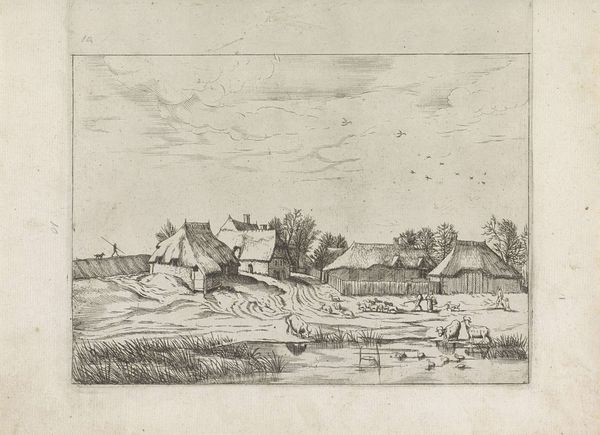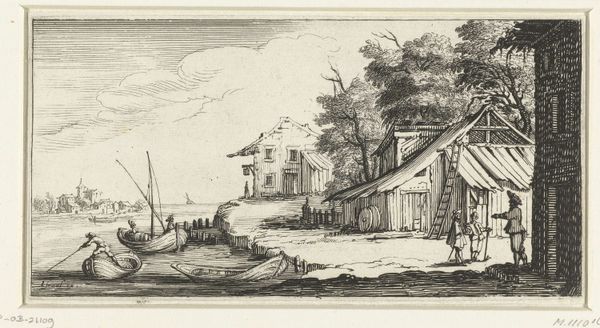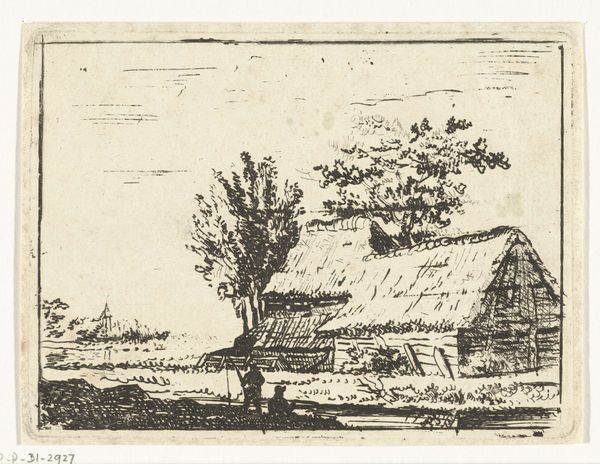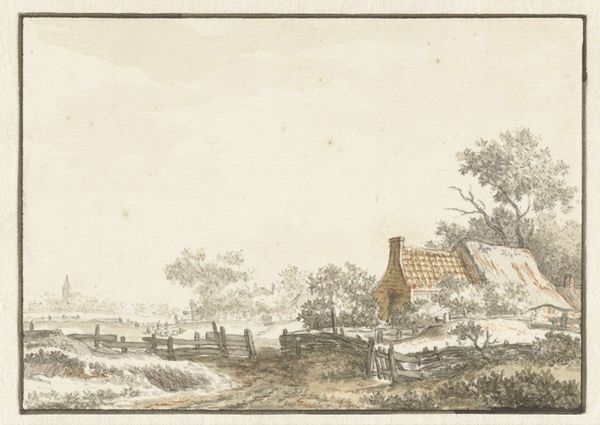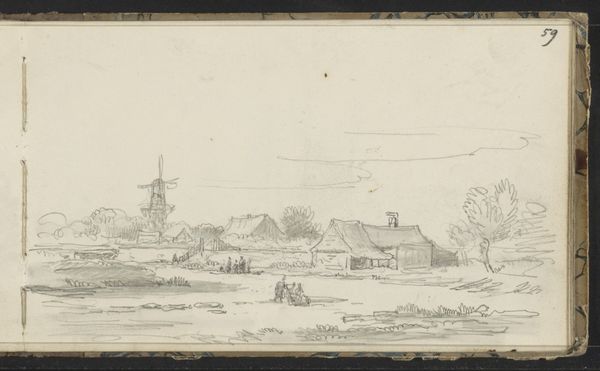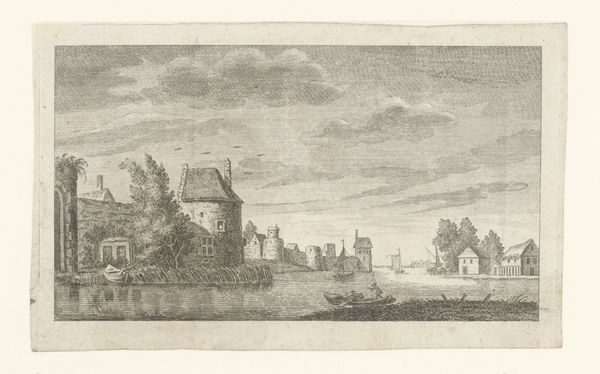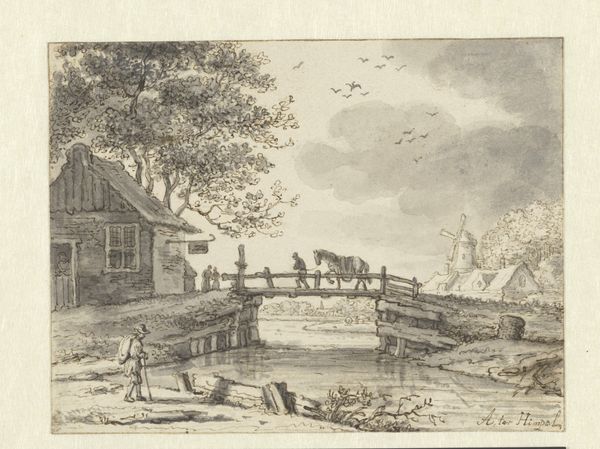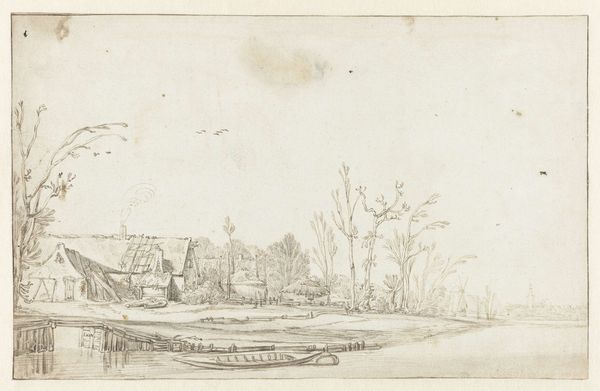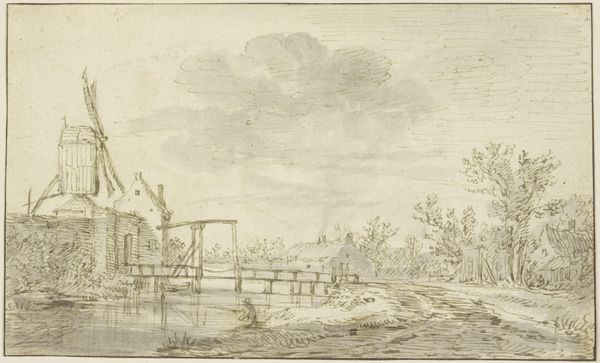
drawing, print, etching, ink
#
drawing
#
dutch-golden-age
# print
#
etching
#
landscape
#
ink
Dimensions: 5 5/16 x 7 5/16 in. (13.5 x 18.6 cm)
Copyright: Public Domain
Editor: This is a Dutch Golden Age landscape by Aelbert Cuyp, dating from between 1600 and 1700. It's a print, an etching actually, using ink on what appears to be laid paper. The scene has a really serene, almost melancholic mood to me. What strikes you about this piece? Curator: It’s the symbols of domesticity and industry, and how Cuyp renders them, that speak volumes to me. Look at the cottages clustered by the water – almost a visual shorthand for community. And what of the reeds or sparse trees? Consider these elements as not just representations, but carriers of memory. The wind-blown trees, for example – could that suggest resilience in the face of hardship? Editor: I hadn't thought of them as carriers of memory, that's interesting! I mainly saw it as a pretty, if simple, pastoral scene. So, you're suggesting these humble homes and bent trees aren’t merely aesthetic? Curator: Precisely. During the Dutch Golden Age, landscapes weren't just about representing the land, they reflected national pride and identity. These ordinary scenes celebrated the prosperity and hard work of the Dutch people. This etching suggests a nation defining itself, rooted in its landscape, both shaped and shaped by the people. Do you see other repeating shapes that are reminiscent of something larger at play? Editor: Well, the repeating triangles of the roofs create a rhythm that mirrors the choppy water, perhaps suggesting a unity? That this is all connected in some way? Curator: Exactly. A harmony between the human endeavor and nature. It's the silent dialogue between them, continuously influencing each other that echoes through centuries. Now, seeing it in this light, has your understanding of the initial mood shifted? Editor: Definitely! It's not just melancholy, it's a quiet strength, an endurance. Thank you for that insight! I appreciate your unpacking these visual symbols and helping me to think deeper about art as cultural memory.
Comments
No comments
Be the first to comment and join the conversation on the ultimate creative platform.
